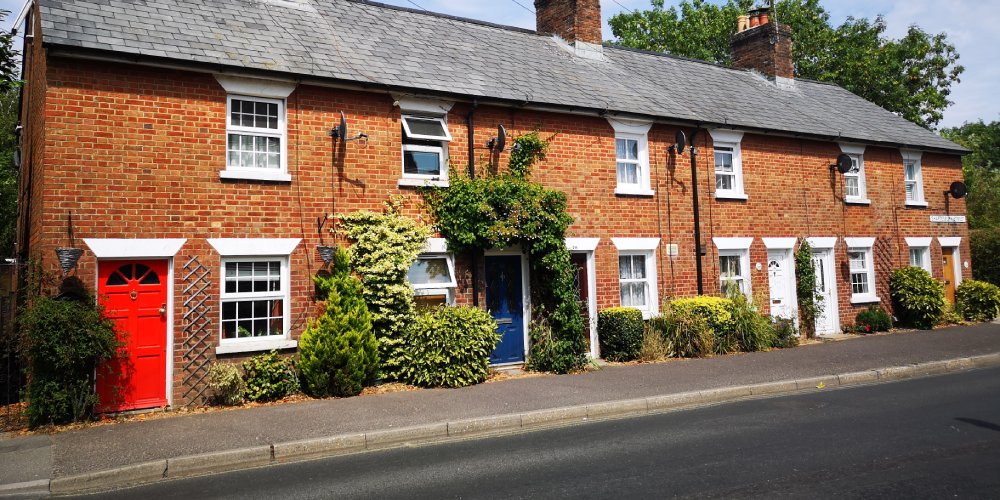You’ve probably heard someone say “banks won’t lend to people your age” or perhaps you’ve experienced a high street lender turning you down because you’re over 55.
These situations can leave you feeling excluded from the property market and unable to access the wealth tied up in your home.
Here’s the good news: the UK mortgage market has changed dramatically in recent years.
Many lenders now offer products specifically designed for older borrowers, opening up new possibilities whether you’re looking to move house, help your children financially, or refinance an existing loan.
With the right approach, you can access mortgage funding well into your later years, often with more flexible terms than were available even a decade ago.
Mortgage Options That Work In Your Later Years
The mortgage market for older borrowers offers far more choice than many people realise.
As the UK’s population ages, lenders have adapted with options ranging from enhanced standard products to specialist solutions designed specifically for retirees.
Standard residential mortgages now commonly extend well beyond traditional retirement age, with many lenders offering terms into your 70s or even 80s.
For those needing something more tailored, Retirement Interest-Only (RIO) mortgages let you pay just the interest indefinitely. Then there’s equity release – including lifetime mortgages and home reversion plans – which allows you to access your property’s value without making monthly payments.
Each option has distinct advantages.
- Standard mortgages feel familiar but have stricter affordability checks.
- RIO mortgages keep monthly costs low but require proof you can maintain payments throughout retirement.
- Equity release provides access to funds without monthly payments, but interest can reduce your property’s value over time.
The best choice depends on your personal circumstances – your age, income, property value, and what you need the money for.
Standard Residential Mortgages for Older Borrowers
High street lenders have relaxed their age restrictions considerably in recent years. Many mainstream banks now lend to applicants in their 70s, with loans that can run until the borrower reaches 80-85.
Banks assess retired applicants differently than working-age borrowers.
Instead of looking at salary, they’ll consider your pension income, investment returns, and other regular income sources. You’ll need to provide pension forecasts, statements from private pensions, and details of investment income.
A couple aged 67 might secure a 10-year mortgage from a high street lender by showing sufficient pension income to cover the repayments. The lender would request pension statements, evidence of additional income, and recent bank statements to confirm regular payments.
Some lenders offer interest-only options to older borrowers, though you’ll need to show a credible repayment strategy – perhaps downsizing at the end of the term or using investments that will mature.
How Retirement Interest-Only Mortgages Give You Flexibility
Retirement Interest-Only mortgages bridge the gap between standard mortgages and equity release.
They’re designed for older borrowers who can afford monthly interest payments but don’t want the pressure of repaying the capital within a fixed term.
With a RIO mortgage, you only pay the monthly interest, keeping your payments lower than a repayment mortgage. The capital is repaid when you sell your property, move into long-term care, or pass away – there’s no fixed end date.
To qualify, you must show you can afford the interest payments from your retirement income. Most RIO mortgages are available from age 55 or 60, with no upper age limit at application.
As an example, on a £400,000 RIO mortgage with 5% interest, you’d pay around £1,667 in monthly interest. The £400,000 capital only gets repaid when you sell, move into care, or pass away.
RIO mortgages work particularly well if:
- You need to remortgage an existing interest-only loan that’s ending
- You want to release equity while maintaining full ownership
- You can afford monthly payments but want flexibility on capital repayment
- You wish to preserve more of your property’s value for inheritance
The main consideration is that you need sufficient retirement income to meet the monthly interest payments for the rest of your life.
Lifetime Mortgages: Accessing Your Property Wealth
Lifetime mortgages let homeowners aged 55 and over release tax-free cash from their property without making monthly payments if they choose not to.
With a standard lifetime mortgage, you borrow a lump sum secured against your home. The interest adds to the loan balance rather than being paid monthly. Both the original loan and accumulated interest are repaid when you die or move into long-term care, usually from selling your property.
If you release £100,000 against a £425,000 property at 6% interest, your debt would grow to about £179,000 after 10 years. If your property also increases in value over this period, you may still retain equity.
Today’s lifetime mortgages offer more flexibility than earlier products.
You can now:
- Make voluntary payments to reduce compound interest effects
- Choose a drawdown option, taking an initial sum with a reserve for later use
- Protect a percentage of your property value for inheritance
- Benefit from the “no negative equity guarantee” – ensuring you’ll never owe more than your property’s value
While lifetime mortgages provide access to tax-free cash without monthly payments, the compound interest will reduce your estate’s value over time. Also worth noting: taking equity release may affect your eligibility for means-tested benefits and could impact inheritance tax planning.

How Age Affects Your Mortgage Options
Age limits vary significantly across mortgage products and lenders, creating a landscape that benefits from expert guidance.
For standard residential mortgages, many lenders now accept applications from people up to age 75-80, with loans running until age 80-85. Each lender sets its own policy, with some smaller building societies offering even more flexibility.
Retirement Interest-Only mortgages generally start from age 55-60 and often have no upper age limit. The focus shifts from age to income stability – can you show sufficient reliable retirement income to cover the interest payments?
Lifetime mortgages are available from age 55, with no upper age limit – in fact, with these plans older applicants can borrow a higher percentage of their property value.
For joint applications, lenders usually consider the younger applicant’s age when calculating the maximum term for standard mortgages. However, they’ll want to ensure the mortgage remains affordable if one person dies.
Lender policies vary considerably: Halifax caps the age at the end of the mortgage term at 80, while Nationwide extends this to 85 for existing borrowers. Smaller building societies may consider applications with no set upper age limit, assessing each case individually.
Why Older People Need Mortgages
Older borrowers approach mortgage lenders for various reasons, each reflecting different life stages and financial needs.
Many need to refinance existing interest-only mortgages reaching the end of their term. RIO mortgages can be ideal here, allowing you to continue making affordable interest payments without the pressure of repaying the capital by a fixed date.
Home improvements represent another common reason for borrowing later in life.
You might want to adapt your property for changing needs – adding a downstairs bathroom or installing a stair lift. These adaptations can make your current home suitable for years to come.
Helping family members, particularly with property purchases, has become increasingly common. With first-time buyers facing significant hurdles, many parents and grandparents use their property wealth to provide deposits for younger family members.
Some older people simply want to move home – perhaps downsizing to a more manageable property or relocating to be closer to family. Having a mortgage option makes this more flexible, allowing you to buy the right property rather than being limited to what you can afford with cash alone.
Moving House When You’re Older
Whether you’re looking to downsize, move closer to family, or relocate to your dream retirement location, mortgage options can help make this possible.
Downsizing often involves some level of mortgage borrowing, especially if you’re moving to an area with higher property prices. A couple selling a £500,000 family home might buy a £400,000 property with a £100,000 mortgage, freeing up £400,000 for other uses.
Special considerations apply when buying retirement properties or those with age restrictions.
These properties can sometimes be harder to mortgage due to resale restrictions, service charges, or lease terms. Specialist lenders and brokers have experience with these issues.
How Retirement Income Affects Your Borrowing Power
Retirement income assessment differs significantly from how lenders evaluate working-age borrowers. Instead of salary multiples, lenders examine various income sources and their stability.
Pension income forms the cornerstone of most affordability assessments.
State pensions provide a reliable baseline, while private and workplace pensions add to your borrowing capacity. Lenders will want to see pension statements and may ask for details of how your pension is invested.
Investment income can also support your mortgage application, though lenders may count only a percentage of this income due to its potentially variable nature. Rental income from other properties is usually considered, with lenders counting around 75% to allow for void periods.
For couples, joint income assessment becomes more complex in later life, particularly with a significant age gap. Lenders will want to ensure the mortgage remains affordable if one partner dies.
Hurdles to Getting Approved
For most people, limited income in retirement represents perhaps the biggest hurdle.
Consider all potential income sources – not just pensions but also investment returns, rental income, and any part-time work. Some lenders will also consider using a portion of your savings as “drawdown” income.
Credit history issues can affect borrowers of any age.
Before applying, check your credit report with all three UK credit reference agencies and address any issues. Even small problems like an old missed payment can impact your application.
Property suitability concerns sometimes arise with older borrowers.
Joint application challenges often emerge when one applicant is significantly older than the other. Solutions might include ensuring the younger applicant has sufficient income independently or arranging appropriate life insurance.
If you face a declined application, don’t give up. Consider trying a different lender, adjusting your loan amount, looking at alternative product types, or working with a specialist broker.
Why Specialist Mortgage Advice Can Save You Thousands
High street banks might seem like the natural first port of call, but they often have the most rigid criteria for older borrowers, and the least amount of choice.
Many won’t offer mortgages beyond certain age limits, regardless of your financial situation.
Mortgage brokers who specialise in later life lending can access a much wider range of options, including smaller building societies and specialist lenders who don’t deal directly with the public. These lenders often take more flexible approaches to age limits, income assessment, and property types.
Specialist advisers understand how to present complex income arrangements to lenders.
They know which lenders will consider investment drawdown as income and which will take a more holistic view of your finances rather than just ticking boxes.
They can also help you think through the long-term implications of different options.
- What happens if interest rates rise?
- How might your choice affect inheritance plans?
- Could there be tax implications you haven’t considered?
When looking for a mortgage adviser, seek someone with:
- Specific experience in later life lending
- Whole-of-market access (not tied to particular lenders)
- Relevant qualifications, such as later life lending accreditation
- A consultative approach that considers your wider financial situation
Steps to Success
Applying for a Mortgage After 55
Preparing thoroughly before making a mortgage application can significantly improve your chances of success.
Start by gathering all the necessary documentation: proof of identity and address, evidence of all income sources, bank statements, pension information, and details of any existing mortgages.
Check your credit profile before applying and address any errors or issues that might affect your application.
Consider your property and how it might be viewed by lenders. Addressing any obvious issues before applying can prevent potential problems.
The timeline for mortgage applications varies by lender and product. Standard residential mortgages might take 4-6 weeks from application to offer, while specialist products like equity release can take 6-8 weeks.
Choose a solicitor with experience in later life lending, particularly if you’re considering equity release or a retirement interest-only mortgage, as these have specific legal requirements.
Making Smart Choices
The UK mortgage market now offers more options for older borrowers than ever before.
Your choice should reflect your specific circumstances – your age, health, income, property value, and what you want to achieve through borrowing.
Professional advice can be invaluable in working through these complex choices.
A specialist mortgage broker can help you understand all your options, find appropriate lenders, and structure your application for the best chance of success.
Consider reviewing your existing mortgage arrangements, especially if you have an interest-only mortgage approaching its end date. Many people in this situation aren’t aware of the new options available to them.
Talk to your family about your plans, particularly if your mortgage choice might affect inheritance. Open conversations can prevent misunderstandings and ensure everyone understands your reasoning.
Frequently Asked Questions
Lenders look at pension income, investment returns, rental income, and other regular income sources instead of traditional salary calculations.
Yes. Retired individuals can secure mortgages by demonstrating stable retirement income from pensions, investments, and other sources.
A RIO mortgage allows you to pay only the monthly interest, with the capital repaid when you sell the property, move into care, or pass away.
Many modern lifetime mortgages allow voluntary payments to reduce the compound interest effect.
Yes. Many older homeowners use their property wealth to provide deposits or financial support to younger family members.
Downsizing can be an excellent option, often involving a smaller mortgage or using equity from your current property to fund a new home.


